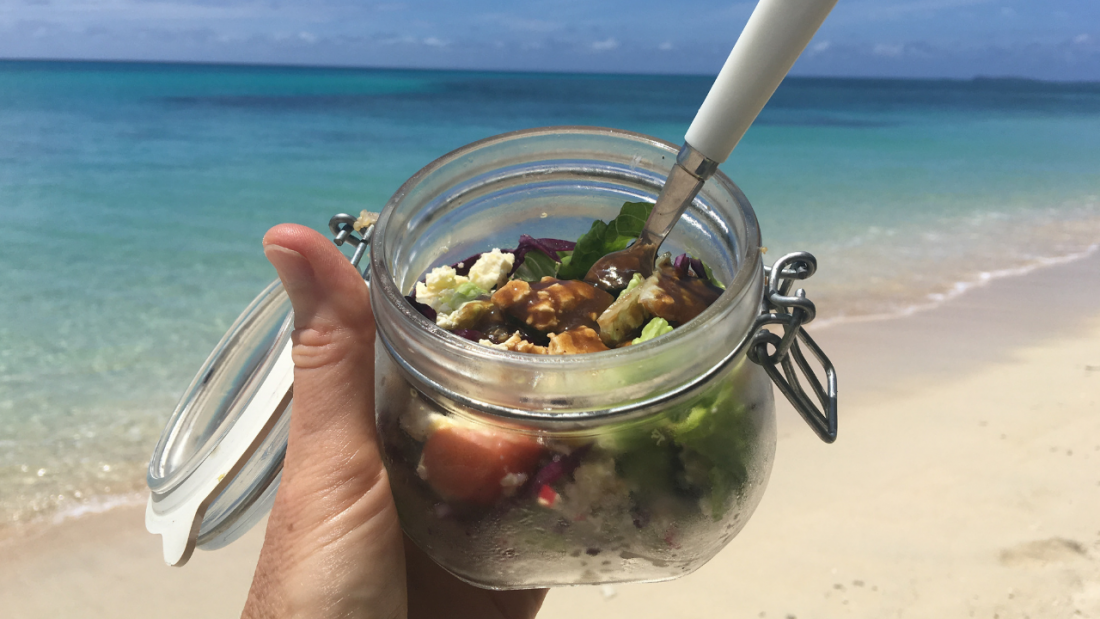Salads may have nutritious virtues, but they also are packed with colour and flavour. They have evolved from very humble and salty beginnings into a wide variety of dishes that be offered as a side or whole meal.
Salads also span the globe across Europe, Asia and the Middle East. Whilst ideally a summer dish, a warm salad is ideal for cooler spring and autumn days.
The origins of salads
A salad is a dish containing a mixture of ingredients. Traditionally, salads contained small pieces of vegetables.
The name salad comes from the Latin word ‘salata’, which means salty. Now this may seem a little strange, but salads were originally made from vegetables that had been preserved in brine or salty vinegar dressing.
Today’s salads
Salads can be chilled, at room temperature or warm. They are offered as appetizers or entrées, a side, main meal or fruit-based dessert (sometimes with herbs or spices, such as mint, basil, cinnamon or star anise).
A main meal salad needs to include a range a plant-based ingredients plus a serve of protein.
Popular salad ingredients
Vegetables and fruit
Leaves such as rocket, spinach, and lettuce.
Raw vegetables; including cucumbers, capsicum (peppers), tomatoes, onions, carrot, beetroot, celery, radishes, mushrooms, avocado, olives, green beans, and herbs (mint, parsley, coriander, basil).
Citrus, pear, apple, mango, nectarine, dried berries and fruit, and fresh berries.
Whole grains
Quinoa, rice, wild rice, amaranth, cous cous, barley and buckwheat.
Sources of protein
Egg, tofu, lentils, legumes, cheese and grilled meats, chicken or seafood, as well as nuts and seeds.
Traditional dressings
- Italian (vinegar or citrus juice) with olive oil, herbs, salt and sugar.
- Balsamic and olive oil.
- Mayonnaise.
Warm salads
Key ingredients for a warm salad include:
Mixed root vegetables, sweet potato, and pumpkin.
Blanched broccoli and cauliflower.
Warm cooked egg, lentils, legumes, tofu, meat, poultry or seafood.
Nutritious virtues
- Being plant based, salads provide a range of phytonutrients, vitamins, minerals and fibre. These ingredients are low in energy (kilojoules and calories), which makes them helpful in maintaining a healthy body weight.
- By adding in a lean source of protein you can create a whole meal.
- Keep cheese serves to the recommended size, see here.
- Minimise added salt and sugar by using herbs, spices, vinegar and citrus rind and juice.
- Watch for ingredients that are high in saturated fat, so go easy on mayonnaise.
- If you have a sensitive digestive system or have irritable bowel syndrome try reducing the number of raw ingredients. Have cooked and warm vegetable salads as they are easier to digest. You may also try different variety of grains and lentil or legumes too. For personalised advice, please speak with your healthcare practitioner.
- Summertime is great for raw foods, but in cooler weather I would suggest warm cooked vegetables with warm spices. This is digestive advice from Eastern nutrition, not western science. For personalised advice, please speak with your healthcare practitioner.
Practical salad tips
- Grains, lentils and legumes can be cooked the day ahead.
- Roasted root vegetables, for a chilled or room temperature salad, may be prepared ahead of time.
- Left over grilled meats, poultry and seafood can be added to a salad the next day.
- If preparing a leafy salad ahead of time, do not add the dressing until you are ready to eat the salad. This will prevent the leaves from becoming wilted and soggy.
- Use in-season fruits and vegetables as they are fresher and cheaper. You will also enjoy variety across the seasons.
Salads are a versatile meal, and they have come a long way since the Roman times. The addition of a dressing, herbs and spices help create a tasty and satisfying dish.
Recipes for two of my favourite salads can be found here:
